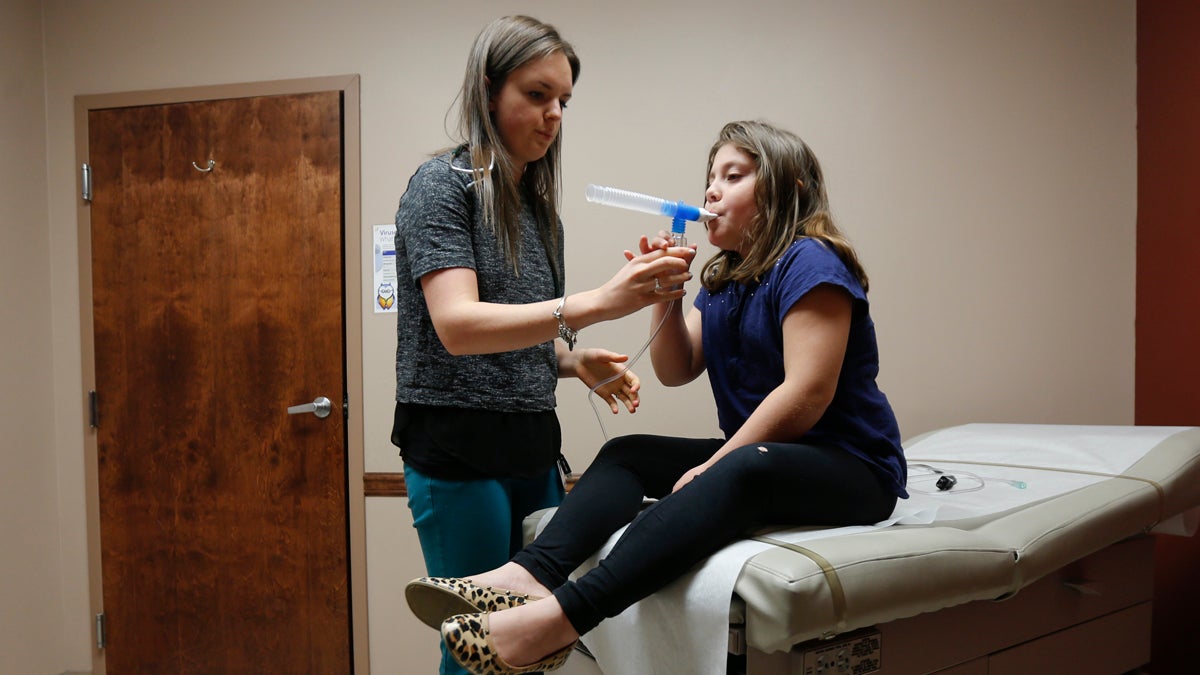Checking in on expanded Medicaid’s 439,000 new enrollees in Pa.

A physician assistant administers a nebulizer treatment to a patient. (Mike Groll/AP Photo)
Seven months after Medicaid expanded in Pennsylvania, about 439,000 more residents have enrolled in the government insurance program for the poor.
That represents a 16 percent increase from December of 2014, before coverage went into effect for former Gov. Tom Corbett’s Healthy PA alternative Medicaid option.
There has long been concern that expanding Medicaid may increase wait times for program enrollees or make it difficult for them to find a clinic accepting new patients.
Now, nonprofits and academics are beginning to research whether that is happening.
The nonprofit Pennsylvania Health Access Network helped enroll about 2,000 people since Medicaid expanded, and is now surveying those patients to see if they are actually getting care.
“Are they using their health insurance? Are they having any problems accessing a doctor? And also making sure they understand the importance of going to a primary care doctor and not the emergency room for care,” said project director Antoinette Kraus.
A “secret shopper” experiment showed it was easier for Medicaid patients in 10 states including Pennsylvania to get primary care appointments in 2014 than it was about a year earlier, after a payment boost was instituted for doctors.
The researchers at the University of Pennsylvania plan to repeat the simulated patient study in January to see the impact of the Medicaid expansion and other provisions of the Affordable Care Act on appointment availability and wait times for new patients.
In Michigan, primary care appointment availability actually increased midway through that state’s Medicaid expansion, after about 350,000 adults had enrolled in the new program.
“We expected that as practices were getting full due to Medicaid expansion, that we would see decreased availability of these appointments and, potentially, longer wait times,” said Dr. Renuka Tipirneni, a lecturer in internal medicine at the University of Michigan. “What was interesting is that we saw the opposite happen.”
Fifty-five percent of clinics Tipirneni’s team called had appointments available for Medicaid patients after the expansion.
That was a 6 percent increase.
Tipirneni speculates increases in payments to primary care providers could have enticed more of them to accept Medicaid patients.
“Or, it could be that with increased numbers of patients with Medicaid in communities, primary care providers saw this as an opportunity to serve a growing share of patients in Michigan that had coverage,” Tipirneni said.
Wait times for those appointments in Michigan held steady at one to two weeks.
WHYY is your source for fact-based, in-depth journalism and information. As a nonprofit organization, we rely on financial support from readers like you. Please give today.

